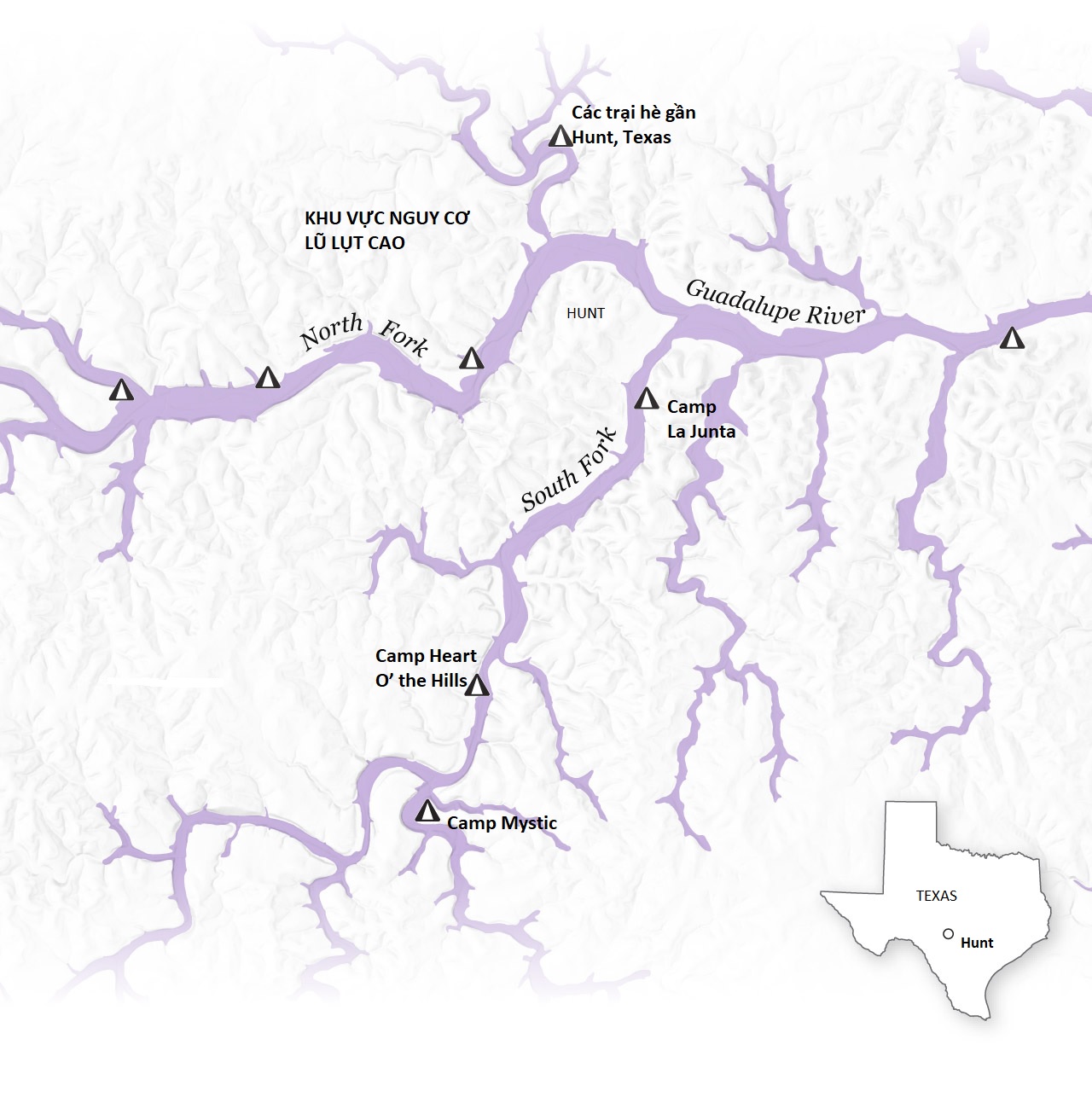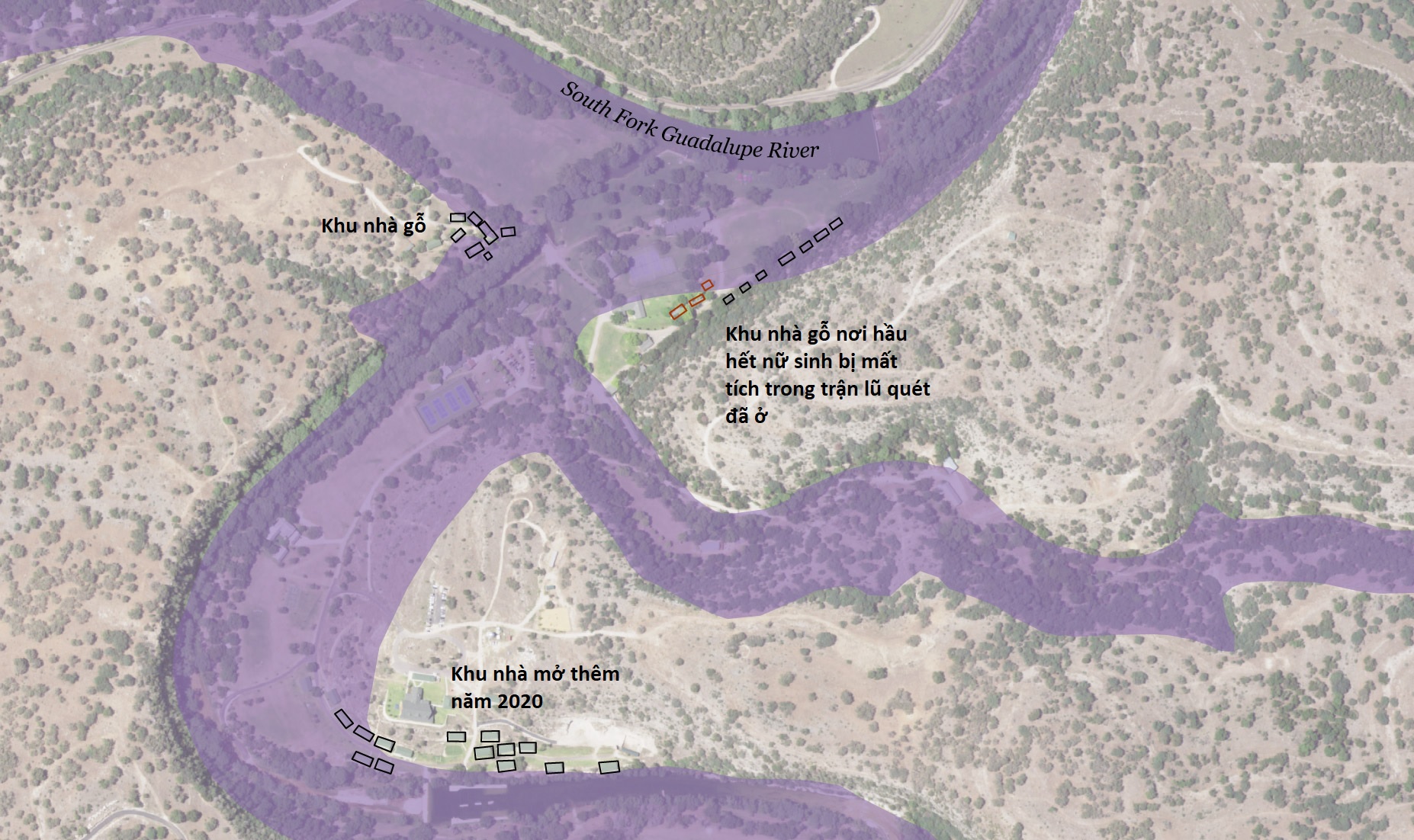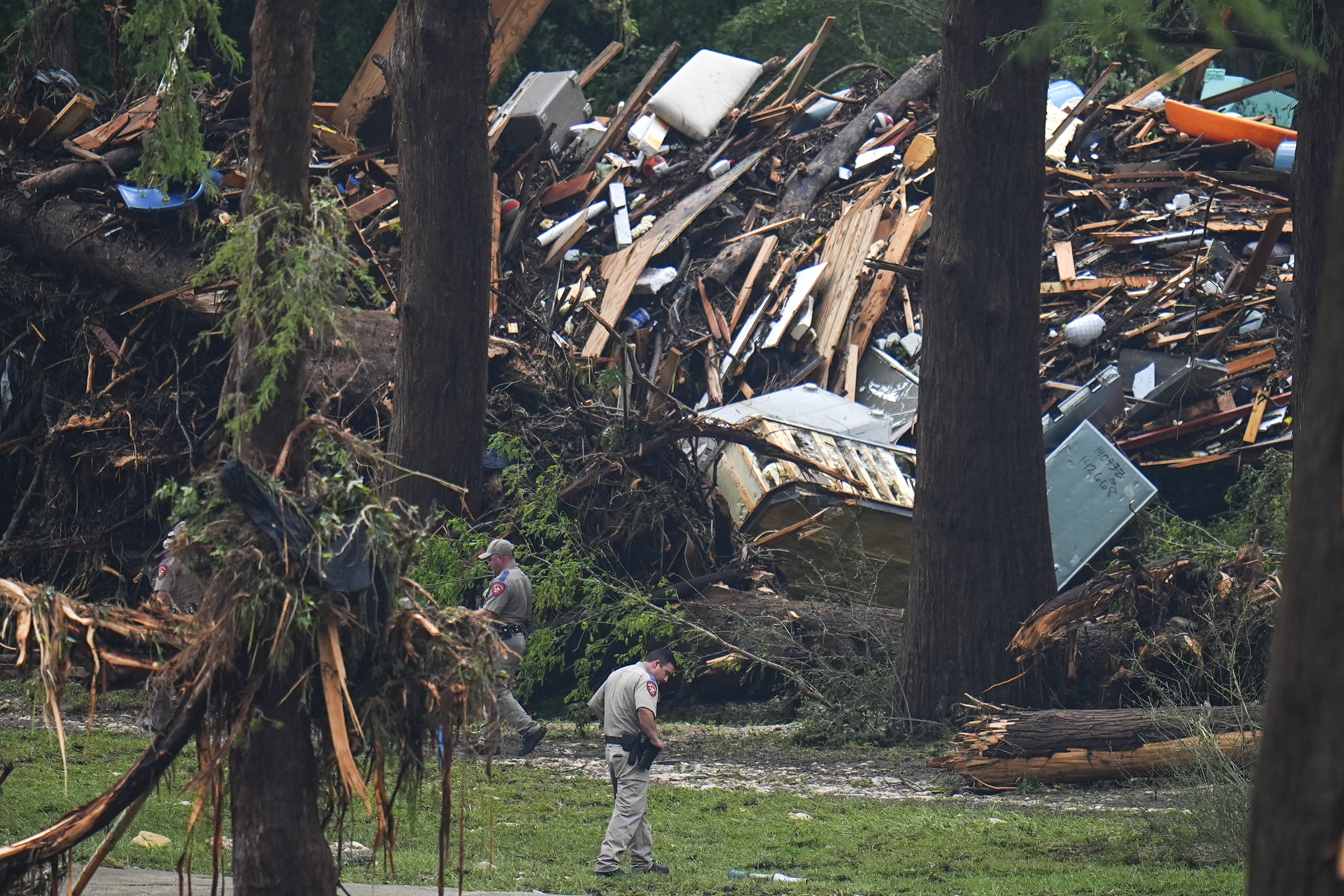At least 104 people died when a devastating flash flood hit the Texas Hill Country in central Texas on the morning of 4/7. Kerr County, home to numerous summer camps for students along the Guadalupe River and its tributaries, suffered the heaviest losses.
The Kerr County Sheriff's Office reported 84 deaths on the evening of July 7, including 56 adults and 28 children.
The Federal Emergency Management Agency (FEMA) stated that in the headwaters of the Guadalupe River in Kerr County, the area hardest hit by the flash flood, at least 13 summer camps were built near or partially within high-risk flood zones.
"You're always going to have a risk when you're near a river," said Allison C. Reilly, associate professor of civil and environmental engineering at the University of Maryland.
 |
Locations of summer camps and tributaries of the Guadalupe River in Texas. Graphics: WP |
The Texas Hill Country is a semi-arid region with a thin layer of soil over hard rock, unable to absorb large amounts of rainwater quickly. When it rains heavily, water rushes down from the hills into the rivers below, earning the Texas Hill Country the nickname "Flash Flood Alley," one of the most dangerous places in the US.
Last weekend, these long-warned-of risks became a reality when heavy rains dumped over 450 million cubic meters of water on Kerr County, causing the river to rise rapidly and flood summer camps in the middle of the night.
Camp Mystic, which was once attended by the daughters of former President Lyndon B. Johnson and several Texas governors, was among the hardest hit. Twenty-seven of the 28 children who died in the Texas floods were at Camp Mystic. At least 10 campers and a counselor are still missing.
"We have had plenty of warnings in this area and we’ve seen floods," said Richard Eastland Jr., son of Richard "Dick" Eastland, who runs Camp Mystic. "But this one, I just don’t know how to explain it. It was so fast and so terrible. We’ve never seen the water that high."
Camp Mystic and neighboring camps are built in picturesque locations near rivers winding through rolling hills. This scenic terrain contributes to the flash flood risk, according to Hatim Sharif, professor of civil and environmental engineering at the University of Texas at San Antonio.
The Texas Hill Country sits on the Balcones Escarpment, a prominent geological boundary with a steep and rugged terrain that stretches from near Del Rio in the southwest through cities like San Antonio and Austin, and northeast to near Dallas-Fort Worth.
Warm air from the Gulf of Mexico condenses when it meets the cliffs and hills, causing heavy rain. Rainwater then rapidly flows down the hillsides from multiple directions, flooding rivers and streams.
"The water will flow very fast," Sharif said.
 |
Camp Mystic within a high-risk flood zone (purple). Graphics: WP |
As climate change increases temperatures, a warmer atmosphere can hold more moisture, increasing the risk of heavy rains and flooding. This puts summer camps along the Guadalupe River in increasing danger.
In the headwaters of the Guadalupe River, floodwaters inundated cabins at Camp La Junta, an all-boys camp that has operated for over 90 years. According to a post on the camp's Facebook page, everyone was safely evacuated.
Downriver, staff at Camp Heart O' the Hills reported "catastrophic flooding." While the all-girls camp was not in session at the time, 68-year-old director Jane Ragsdale and a co-owner died in the flood.
Joel Scata, a senior attorney at the Natural Resources Defense Council, explained that landowners are allowed to build in high-risk flood areas but must meet building and construction requirements. While FEMA's construction requirements haven't been updated since 1976, local governments can enact stricter regulations.
Kerr County enacted flood prevention requirements in 2020, including stipulations that new or renovated residential buildings and structures must be built higher.
However, structures in high-risk flood areas are often low-value buildings, such as cabins or mobile homes found at summer camps, according to Reilly.
"People tend to build cheap, low-value housing in floodplains," she said. "Cabin-like structures fit that idea, as the construction costs or damage incurred in case of a flash flood are not high. But we haven't considered the risk to people, to the children in those cabins."
Reilly added that it's crucial for communities in flood-prone areas to mitigate risks through multiple strategies: elevating structures, installing early warning systems, and ensuring evacuation plans are in place.
Youth summer camps in Texas are required to have emergency plans, including for natural disasters. Inspectors from the Texas Department of State Health Services review these plans annually.
Licensed camps must also instruct campers on what to do in case of fire, natural disaster, or evacuation. However, many in the area hit by the recent flash flood were caught off guard by the disaster's severity.
 |
Local officials inspect the banks of the Guadalupe River after flooding in Hunt, Texas, on 5/7. Photo: AP |
Even if buildings are outside the risk zone, that doesn't guarantee safety. Experts suggest FEMA's flood maps may be outdated and don't account for climate change.
"The agency assumes that future floods will be the same as past floods, which is not accurate," Scata said. "Floods are becoming more severe due to factors like heavier rainfall, making the warning maps underestimate the risk."
Thuy Lam (According to Washington Post, CNN, Reuters)












